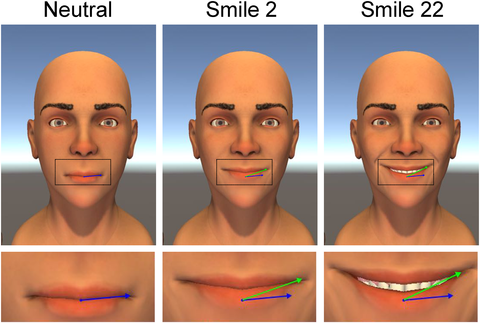CS&E professor researches successful smiles

A goal of the research is to help people who have experienced facial paralysis
MINNEAPOLIS / ST. PAUL (10/06/2017) — University of Minnesota computer science and engineering assistant professor Stephen Guy is part of a collaborative research team looking into what makes the perfect smile. In their study researchers used a computer-animated 3D facial tool to investigate how smiles are perceived.
The study was recently published in the multidisciplinary open access journal PLOS ONE.
“A lot of people don’t understand how important their smiles are and how important this aspect of communication we do with each other every day is,” Guy said in a recent The Guardian article.
The University of Minnesota team, which includes Nathaniel Helwig from the University of Minnesota Department of Psychology and Sofia Lyford-Pike from the University's Medical School, surveyed more than 800 volunteers at the Minnesota State Fair by showing them a virtual face smiling in a range of ways. The volunteers rated how they felt about the smiles using numeric scales based on colloquial understandings of terms like “fake” to “genuine,” and “creepy” to “pleasant.”
The team found that a successful smile fell within an optimal range and there were certain signature traits that people found pleasing. For example, slightly asymmetrical smiles were more attractive than perfectly symmetrical ones, while wide smiles showing fewer teeth were preferable to wide smiles showing many teeth, which could be perceived as showing “contempt.”
One of the goals of the research is to help people who have experienced facial paralysis rediscover or relearn movements and expressions that might have been lost. Guy used the example of a surgeon helping a patient decide on surgical options that could guide a patient in choosing which smile would be better or worse.
Guy went on to explain that this was really just the beginning of research into this area since the study only focused on the mouth and not the entire face or body language.
“The context of your whole face can be important and, in general, a larger context of what the conversation is, and your body’s disposition can be important too,” Guy said. “Those are important limitations we should look into in the future.”
To learn more, read the paper "Dynamic properties of successful smiles" on the PLOS ONE website.